The world of mythology is filled with a fascinating array of creatures that have captured the imaginations of people throughout history. From majestic beings like the Phoenix and the Unicorn, to fearsome creatures like the Dragon and the Leviathan, these mythical beings have been depicted in artwork from ancient times to the present day. Their depictions in art not only showcase the talent and creativity of artists, but also reflect the cultural and symbolic significance of these legendary creatures. In this article, we will delve into the origins, artistic representations, and influence of famous mythical creatures, exploring their rich histories and enduring allure in the world of art.
Contents
- The Legendary Phoenix
- The Enigmatic Dragon
- The Mystical Unicorn
- The Mysterious Sphinx
- The Legendary Leviathan
- The Mythical Mermaid
- The Iconic Centaur
- The Myth of Medusa
- Conclusion
-
Frequently Asked Questions
- 1. What is the origin of the Phoenix myth?
- 2. Why is the Phoenix often associated with fire?
- 3. How has the Phoenix been portrayed in different cultures?
- 4. What symbolism does the Phoenix hold?
- 5. How has the Phoenix influenced literature and popular culture?
- 6. Are there any famous artistic depictions of the Phoenix?
- 7. What does the Phoenix represent in religious contexts?
- 8. How has the Phoenix been used as a symbol in modern times?
- 9. Can the Phoenix be seen as a metaphor for personal growth?
- 10. How does the Phoenix compare to other mythical creatures in terms of popularity?
- References
-
Frequently Asked Questions
- 1. What is the significance of mythical creatures in artwork?
- 2. Why are phoenixes often depicted rising from ashes in art?
- 3. How have dragons been depicted differently across various cultures?
- 4. What is the significance of unicorns in medieval art?
- 5. Why are sphinxes found in ancient Egyptian artwork?
- 6. How does the myth of Leviathan influence religious artwork?
- 7. What are the origins of the mermaid folklore?
- 8. Why were centaurs significant in ancient Greek and Roman art?
- 9. Why is Medusa a prominent figure in art history?
- 10. How do mythical creatures continue to influence modern art?
- References
- Read More
The Legendary Phoenix
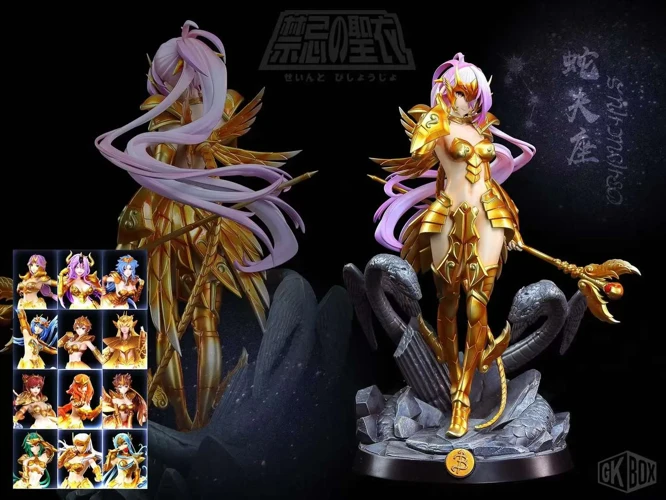
The Legendary Phoenix is a mythical creature that has captured the imagination of people across cultures for centuries. Originating from ancient Egyptian and Greek mythology, the Phoenix is often associated with the theme of resurrection and new beginnings. According to mythology, the Phoenix is a magnificent bird that has the ability to rise from its own ashes after its death, symbolizing the cyclical nature of life and the concept of rebirth. In art, the Phoenix is commonly depicted as a large, majestic bird with vibrant plumage and a regal presence. Artists often emphasize its fiery nature, incorporating golden and fiery hues into their representations. The Phoenix has been a popular subject in various art forms, including paintings, sculptures, and even jewelry. Its symbolism of immortality and renewal has resonated with artists and viewers alike, making it a beloved creature in the world of art.
Origin and Symbolism
The origin and symbolism of the Legendary Phoenix can be traced back to ancient Egyptian and Greek mythology. In Egyptian mythology, it is known as the “Bennu bird,” representing the soul of the sun god Ra. In Greek mythology, the Phoenix is associated with the sun god Apollo. The symbolism of the Phoenix centers around the concept of rebirth and immortality. The ability of the Phoenix to be reborn from its own ashes symbolizes the cycle of life, death, and renewal. The Phoenix is often seen as a symbol of hope, resilience, and the ability to overcome challenges. Its fiery nature represents transformation and the power to rise above adversity. Throughout history, the Phoenix has been a powerful symbol embraced by different cultures, inspiring artists and becoming a popular motif in various forms of art as a representation of resilience and the triumph of the human spirit.
Artistic Representations
Artistic representations of the Legendary Phoenix have varied throughout history, showcasing the diverse interpretations of this mythical creature. In ancient Egyptian art, the Phoenix was frequently depicted in funeral rituals and tomb decorations, symbolizing the cycle of life and death. These representations often showcased the Phoenix with its wings outstretched, surrounded by flames and rays of sunlight. Greek and Roman artists also portrayed the Phoenix in their artwork, often emphasizing its majestic appearance and mythical qualities. In Renaissance art, the Phoenix became a popular subject, particularly as a symbol of Christian resurrection and eternal life. These artworks often featured the Phoenix alongside religious figures or in allegorical scenes, highlighting its connection to themes of rebirth and spiritual transformation. Contemporary artists have continued to find inspiration in the Phoenix, incorporating it into various mediums including paintings, sculptures, and digital art. The Phoenix continues to captivate artists and viewers alike, serving as a powerful symbol of hope, renewal, and transformation in art across different eras and cultures. Internal link
Influence on Popular Culture
The Legendary Phoenix has had a significant influence on popular culture, with its enduring symbolism and captivating appeal. This mythical creature has been featured in various forms of media, including literature, films, and video games. One notable example is J.K. Rowling’s renowned Harry Potter series, where the Phoenix plays a prominent role as a symbol of hope and resurrection through the character of Fawkes. The Phoenix has also made its way into the world of music, with iconic artists like Stevie Nicks and Fall Out Boy incorporating phoenix imagery into their album covers and song lyrics. Additionally, the Phoenix has been adopted as a symbol of resilience and transformation, inspiring individuals to overcome challenges and embrace personal growth. Its captivating presence in popular culture has cemented the Phoenix’s status as a timeless and powerful mythical creature.
The Enigmatic Dragon
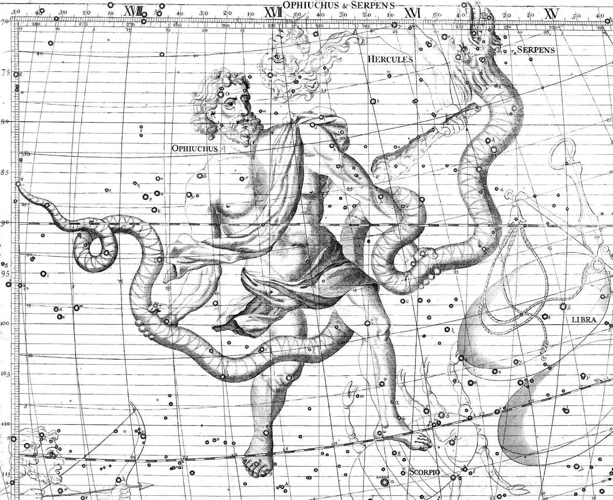
The Enigmatic Dragon has a rich mythological background that spans across cultures and time periods. In mythology, dragons are often portrayed as powerful, serpentine creatures with scaly bodies and the ability to breathe fire. They are associated with both malevolence and wisdom, representing the duality of their nature. Throughout history, dragons have been depicted in various artistic interpretations, showcasing the diverse cultural symbolism attributed to them. In Chinese art, dragons are revered as symbols of luck, power, and strength, often depicted in vibrant colors and intricate patterns. In European art, dragons are often portrayed as fearsome and monstrous beasts, representing chaos and the forces of evil. The artistic representation of dragons has greatly influenced various art movements, such as the intricate dragon motifs found in medieval tapestries and the fantastical dragons featured in the works of J.R.R. Tolkien. With their mysterious and captivating presence, dragons continue to inspire artists to create awe-inspiring depictions that highlight the mythical allure of these legendary creatures.
Mythological Background
The mythological background of the Phoenix is steeped in ancient legends and folklore. This legendary creature is believed to have originated from ancient Egyptian mythology, where it was known as the Bennu bird. In Egyptian culture, the Phoenix represented the sun god Ra, and its ability to die and be reborn symbolized the sunrise and sunset, as well as the cycle of life and death. In Greek mythology, the Phoenix was associated with the sun god Apollo and was said to have lived in Arabia. It was believed that the Phoenix lived for hundreds of years before building a nest of aromatic herbs and spices, setting it on fire, and emerging from the ashes as a newborn bird. This captivating mythological background has contributed to the enduring fascination and artistic interpretations of the legendary Phoenix.
Artistic Interpretations
Artistic interpretations of the Legendary Phoenix have varied throughout history, showcasing the creativity and imagination of artists across different cultures. In ancient Egyptian art, the Phoenix was often depicted as a bird with a long, curved neck and outstretched wings, symbolizing its connection to the sun god Ra and the concept of eternal life. Greek artists, on the other hand, portrayed the Phoenix as a beautiful bird engulfed in flames, representing its fiery nature and ability to rise from its own ashes. In Chinese art, the Phoenix, known as the Fenghuang, is depicted as a combination of various bird species, representing grace, virtue, and prosperity.
In contemporary art, the interpretation of the Phoenix has evolved even further. Artists explore its symbolism of renewal and transformation in a variety of mediums, including paintings, digital art, and sculptures. They often incorporate vibrant colors, intricate details, and dynamic compositions to capture the essence of this mythical creature. Some artists focus on the magnificent beauty of the Phoenix, while others emphasize its regenerative powers and resilience.
One prominent example of artistic interpretation of the Phoenix can be found in the work of Gustave Moreau, a French Symbolist painter. Moreau’s painting titled “The Mythical Phoenix” portrays the bird as a majestic creature rising triumphantly from the ashes against a backdrop of swirling colors and patterns. His use of symbolism and dreamlike imagery adds an ethereal quality to the artwork, further enhancing the mythical nature of the Phoenix.
Artistic interpretations of the Legendary Phoenix demonstrate the power of art to convey profound ideas and evoke emotions. Whether through ancient Egyptian, Greek, or contemporary artistic styles, the Phoenix continues to inspire artists and viewers alike with its timeless symbolism of rebirth and resilience.
Influence in Art Movements
The influence of the Phoenix can also be seen in various art movements throughout history. One notable movement that drew inspiration from the concept of the Phoenix is Symbolism. Symbolist artists, such as Gustave Moreau and Odilon Redon, embraced the mythical and the fantastical in their works, often incorporating symbols and allegories. The Phoenix, with its associations with rebirth and transformation, perfectly aligned with the themes explored by Symbolist artists. The Phoenix also found its way into the Art Nouveau movement, which celebrated natural forms and organic motifs. Artists like Alphonse Mucha and René Lalique incorporated the bird’s elegant and flowing aesthetic into their designs of jewelry, decorative arts, and posters. The Phoenix’s symbolic significance continued to influence artists in more contemporary movements as well. Surrealist artists, such as Salvador Dalí, often included the Phoenix in their dream-like imagery, using it as a symbol of psychological transformation and the subconscious mind. The influence of the Phoenix in art movements demonstrates its enduring power as a symbol of transcendence and renewal.
The Mystical Unicorn
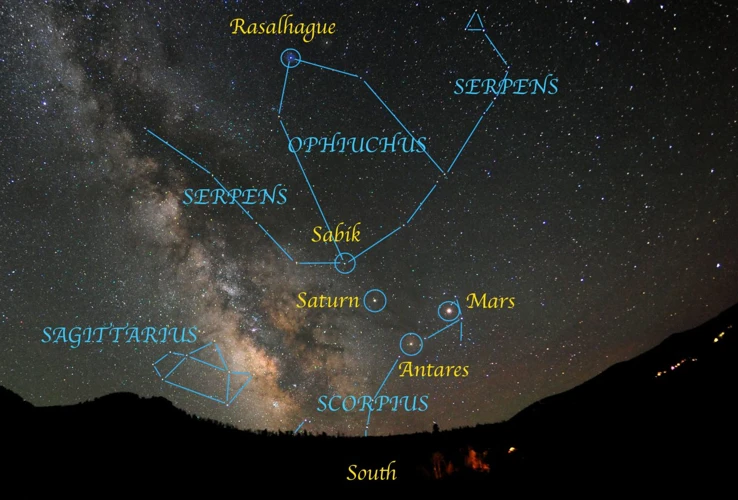
The Mystical Unicorn is a creature that has captivated the hearts and minds of people throughout history. Known for its single horn projecting from its forehead, the Unicorn has been a symbol of purity, grace, and enchantment. Its origins can be traced back to ancient Mesopotamia, where it was depicted in the art and mythology of the region. In medieval Europe, the Unicorn became a prominent symbol associated with Christianity and was often portrayed as a noble and untamed beast. Artistic depictions of the Unicorn span a wide range of styles and mediums, from intricate tapestries and illuminated manuscripts to whimsical paintings and sculptures. The Unicorn is often depicted in serene and mystical settings, surrounded by lush landscapes and vibrant flowers. Its iconic horn is often depicted as spiral-shaped and gleaming, adding to the sense of wonder and magic. In modern times, the Unicorn has continued to capture the imagination, with its imagery being prevalent in popular culture, from children’s books and movies to fashion and home decor. The Unicorn’s enduring appeal lies in its ability to evoke a sense of wonder and magic, reminding us of the beauty and mystery that can be found in the world.
Historical Significance
The historical significance of the mystical unicorn stretches back to ancient times and is deeply rooted in various cultures and mythologies. Dating back to ancient Mesopotamia and appearing in texts and artworks throughout history, the unicorn has often been associated with purity, grace, and strength. In medieval Europe, the unicorn became a symbol of chivalry and nobility, often depicted as a gentle and elusive creature. It was believed that only a pure-hearted individual could capture or tame a unicorn, adding to its mystique and allure. The unicorn’s historical significance is also seen in the tapestries of the Lady and the Unicorn, which are considered masterpieces of medieval art. These tapestries, created in the late 15th century, are rich in symbolism and depict the unicorn as a central figure, emphasizing its status as a mythical creature of great importance. Today, the unicorn continues to captivate our imagination, serving as a timeless symbol of magic and wonder.
Artistic Depictions across Cultures
Artistic depictions of the Phoenix vary across different cultures, each with their own unique interpretations and symbolism. In ancient Egyptian art, the Phoenix, known as the “Bennu Bird,” was associated with the sun god Ra. It was often portrayed with a solar disk on its head, symbolizing its connection to the sun and the concept of eternal life. In Chinese art, the Phoenix, known as the “Fenghuang,” is depicted as a composite creature with the head of a pheasant, the body of a mandarin duck, the tail of a peacock, and the wings of a swallow. It is considered a symbol of good fortune, prosperity, and harmony. In Greek and Roman art, the Phoenix is depicted as a large bird with fiery plumage, symbolizing its ability to rise from the ashes and be reborn. The Phoenix is also found in Persian, Arabian, and Native American art, each culture adding its own unique characteristics and symbolism to the portrayal of this mythical creature. Whether it’s the Egyptian association with the sun, Chinese beliefs of good fortune, or Greek symbolism of rebirth, the artistic depictions of the Phoenix across cultures highlight its enduring appeal and its ability to transcend boundaries.
Modern Imagery and Symbolism
In modern times, the imagery and symbolism surrounding the Unicorn have continued to evolve and captivate audiences. The Unicorn has become an iconic creature, often associated with purity, grace, and enchantment. In popular culture, the Unicorn has been a prevalent figure in various forms of media, including movies, literature, and even fashion. The Unicorn’s image has been incorporated into clothing designs, accessories, and home decor, showcasing its timeless appeal. Additionally, the Unicorn has been embraced as a symbol of individuality and uniqueness, representing the idea of embracing one’s true self and embracing one’s passions. This symbolism has resonated with individuals who value personal expression and the pursuit of their dreams. The Unicorn has also found a place in the LGBTQ+ community, adopted as a symbol of pride and acceptance. Artists have embraced these modern interpretations, creating vibrant and imaginative artwork that reflects the evolving symbolism of the Unicorn in contemporary society. Whether it’s through vibrant paintings, digital art, or intricate sculptures, artists continue to explore the mystical and enchanting qualities of the Unicorn, keeping its imagery alive and relevant in the modern world.
The Mysterious Sphinx
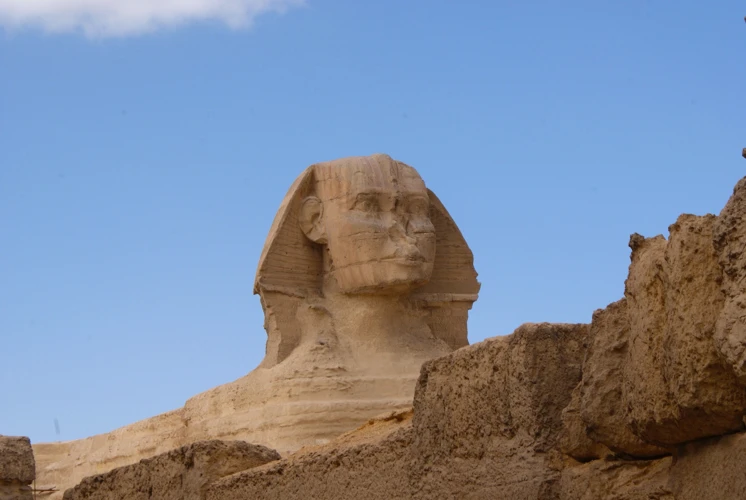
The Mysterious Sphinx is a legendary creature that has intrigued people for centuries. Originating from ancient Egyptian mythology, the Sphinx is depicted as a mythical creature with the body of a lion and the head of a human. The most famous representation of the Sphinx is the Great Sphinx of Giza, which stands tall and proud near the famous pyramids. The Sphinx is shrouded in legends and riddles, often portrayed as a guardian or a gatekeeper to hidden knowledge. In ancient times, the Sphinx was often depicted in art as a majestic and imposing figure, showcasing its power and mystery. The sculptors and artists of ancient Egypt meticulously carved intricate details into the stone, capturing the enigmatic aura of this creature. In contemporary art, the Sphinx continues to be a popular subject, often depicted in various mediums such as paintings, drawings, and digital art. Its allure lies in its enigmatic nature, captivating viewers and leaving them pondering the secrets it holds.
Legends and Origins
The legends and origins of the Sphinx can be traced back to ancient Egypt, where it held great significance in their mythology. The Sphinx is often portrayed as a mystical creature with the body of a lion and the head of a human or a deity. One of the most famous depictions of the Sphinx is the Great Sphinx of Giza, which stands near the pyramids. According to mythology, the Sphinx was known for its enigmatic nature and its propensity for posing riddles to travelers. Those who failed to answer the riddle correctly would meet a tragic fate. The legend of the Sphinx has inspired numerous interpretations in art, with artists capturing its mysterious and powerful presence. Its origins and mythical attributes continue to captivate artists and serve as a source of inspiration for contemporary depictions of the Sphinx in various art forms.
Artistic Representations in Ancient Times
Artistic representations of the Phoenix in ancient times provide valuable insight into the cultural significance of this mythical creature. In ancient Egyptian art, the Phoenix was associated with the sun god Ra and was believed to be a symbol of the sun’s daily journey across the sky. It was often depicted as a bird with outstretched wings, standing atop an upright serpent or coiled around a sacred tree, symbolizing the cycle of life and death. In ancient Greek art, the Phoenix was depicted as a large, majestic bird with fiery plumage, often shown perched on a tree branch or rising from the ashes. These representations emphasized its mythical nature and its association with rebirth. Artists utilized a range of techniques, including intricate details and vibrant colors, to bring the Phoenix to life in their artwork. These ancient depictions of the Phoenix serve as a testament to the enduring fascination with this legendary bird and its powerful symbolism.
Popularity in Contemporary Art
In contemporary art, the popularity of the Sphinx remains as intriguing as ever. Artists continue to find inspiration in this mythical creature, incorporating it into their works in unique and creative ways. The enigmatic nature of the Sphinx, with its human head and lion’s body, allows for a multitude of interpretations in modern art. Some artists choose to highlight the mystery and allure of the Sphinx, creating captivating and thought-provoking pieces that challenge the viewer’s perception. Others focus on the symbolism associated with the Sphinx, exploring themes of wisdom, guardianship, and hidden knowledge. One prominent example of contemporary Sphinx art is the iconic artwork by Gustave Doré, known for his intricate engravings and illustrations. Doré’s depiction of the Sphinx in his illustrations for Edgar Allan Poe’s “The Raven” captivates audiences with its attention to detail and eerie ambiance. The Sphinx’s timeless appeal and enigmatic presence continue to make it a popular subject in contemporary art, allowing artists to explore and express their creativity in diverse and engaging ways.
The Legendary Leviathan

The Legendary Leviathan is a mythical creature that has intrigued and fascinated people for centuries. In many mythological traditions, the Leviathan is depicted as a massive sea serpent or sea monster of immense power. Its origins can be traced back to various ancient cultures, including Mesopotamian, Hebrew, and Christian mythology. The Leviathan is often associated with chaos, destruction, and the untamed forces of the ocean. In religious and literary sources, the Leviathan is depicted as a fearsome creature capable of causing great upheaval and chaos. In artwork, the Leviathan is often portrayed as a massive, multi-headed serpent or dragon-like creature, with scales, fins, and sharp teeth. Artists have sought to capture the awe-inspiring size and power of this mythical creature. Throughout history, the Leviathan has been depicted in various forms of art, including paintings, engravings, and tapestries. Its representation in art serves as a reminder of the vast and mysterious nature of the ocean, as well as the enduring fascination with the unknown.
Mythological Context
The mythological context surrounding the Legendary Leviathan is deeply rooted in ancient cultures and religious texts. In various mythologies, the Leviathan is often depicted as a colossal sea creature with immense power, representing chaos, destruction, and the forces of the deep. In Hebrew mythology, it is described as a sea serpent or a crocodile-like creature, while in other cultures, it takes the form of a giant whale or a dragon. The Leviathan is associated with water, the ocean, and primordial chaos, and its presence in mythological stories serves as a symbol of the struggle between order and chaos. Legends and ancient texts, such as the Bible and Mesopotamian epics, hold detailed descriptions and accounts of encounters with this ferocious and awe-inspiring creature. The existence and portrayal of the Leviathan in these mythological contexts have fascinated artists and writers, inspiring them to create numerous visual representations and interpretations throughout history.
Artwork in Religious and Literary Sources
Artistic renderings of the mythical creature, the Leviathan, can be found in both religious and literary sources. In religious texts, such as the Hebrew Bible, the Leviathan is often depicted as a fearsome sea monster. Its portrayal is tied to themes of chaos, destruction, and the power of God. In literary works, the Leviathan is also commonly referenced, particularly in works of fantasy and mythology. It is often depicted as a gigantic sea serpent with multiple heads or as a creature with a combination of different animal features. These depictions serve to emphasize its intimidating and awe-inspiring nature. Artists have taken inspiration from these religious and literary descriptions to create visually captivating representations of the Leviathan. Through intricate details and vivid colors, they bring this mythological creature to life, exploring its significance as a symbol of power, chaos, and the unknown.
Modern Interpreted Art
In the realm of , the legendary creature known as the Leviathan has continued to captivate artists and viewers alike with its mysterious and awe-inspiring presence. In modern art, the Leviathan is often depicted as a colossal sea serpent or a monstrous creature emerging from the depths of the ocean. Artists have embraced various styles and mediums to portray this mythical being, ranging from paintings and sculptures to digital art and installations. The interpretation of the Leviathan in modern art often reflects contemporary themes and concerns, such as environmental destruction, the power of nature, and the complexities of the human psyche. Through their artistic interpretations, modern artists aim to convey the enormity and uncontrollable nature of the Leviathan, creating thought-provoking and visually striking pieces that invite viewers to contemplate their own relationship with the natural world and the unknown. The enigmatic nature of the Leviathan continues to inspire artists to push boundaries, experiment with different techniques, and explore new realms of artistic expression in the modern era.
The Mythical Mermaid
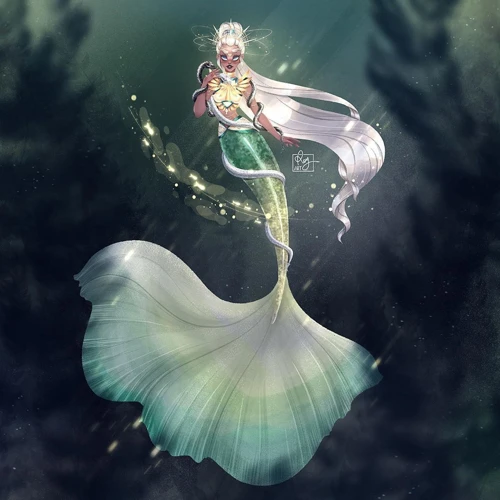
The Mythical Mermaid has long been a captivating figure within folklore and mythology. Originating from stories and legends around the world, mermaids are often depicted as half-human and half-fish creatures, inhabiting the depths of the oceans. These mesmerizing beings have enticed and inspired artists throughout history, resulting in a diverse range of artistic portrayals. From ancient cave paintings to Renaissance-era masterpieces, mermaids have been a popular subject in various art forms.
Cultural interpretations of mermaids have varied, with some societies viewing them as enchanting and benevolent beings, while others saw them as dangerous and seductive entities capable of luring sailors to their demise. This contrasting outlook has influenced the artistic depictions of mermaids, with some artists emphasizing their beauty and grace, while others focused on their ominous nature.
In art, mermaids are often portrayed with flowing hair, alluring eyes, and lustrous tails. They are depicted lounging on rocks or swimming gracefully in the water, showcasing the duality of their existence between the land and sea. Artists have experimented with different styles and mediums to capture the allure of mermaids, ranging from realistic paintings to fantastical illustrations.
The popularity of mermaids in art has continued to thrive in modern times. Their enchanting allure has made them popular subjects in contemporary illustrations, sculptures, and even in popular culture. From classic fairy tales to blockbuster movies, mermaids continue to fascinate and captivate audiences worldwide.
Whether as symbols of beauty, mystery, or the untamed power of the sea, the mythical mermaids have left an indelible mark on the world of art. They embody the allure of the unknown and the wonders of the deep sea, making them enduring and beloved creatures in the realm of artistic representation.
Cultural Origins and Folklore
The cultural origins and folklore surrounding the mythical creature of the Mermaid trace back to various civilizations throughout history. These captivating beings are deeply entrenched in the maritime folklore of coastal regions around the world. From ancient Greek mythology to Scandinavian and Polynesian folklore, mermaids have been featured in tales and legends across cultures. In Greek mythology, they were known as “sirens,” captivating sailors with their enchanting songs. In Scandinavian folklore, mermaids, or “selkies,” were believed to possess the ability to transform from seals into humans. Polynesian mythology also mentions mermaids, known as “Mo’o” or “Hine-i-tauira,” who were regarded as protectors of marine life. The cultural diversity in mermaid folklore is reflected in artistic depictions that showcase their unique characteristics and regional influences. From elegant and enchanting portrayals in Renaissance paintings to more mystical and ethereal renditions in contemporary art, mermaids continue to fascinate and inspire artists and viewers alike.
Artistic Portrayals through History
Throughout history, the Mythical Mermaid has been a captivating subject for artists across cultures. In ancient civilizations like Greece and Rome, mermaids were portrayed as enchanting figures with the upper body of a human and the tail of a fish. These early depictions often showcased their beauty and allure, with intricate details in their long flowing hair and mesmerizing eyes. Renaissance artists continued to incorporate the mermaid motif in their works, often depicting them in ethereal underwater scenes alongside other sea creatures. In Japanese art, mermaids known as “ningyo” were depicted with a more fish-like appearance, often with sharp teeth and scales. The mermaid also found its way into folk art, with fishermen from coastal communities creating mermaid figurines and carvings as symbols of good luck and protection at sea. In contemporary art, the mermaid continues to be a popular subject, with artists exploring various styles and interpretations. From whimsical and fantasy-inspired depictions to more dark and mysterious portrayals, the mermaid remains a fascinating and alluring figure in artistic representations through history.
Mermaids in Pop Culture
In today’s popular culture, mermaids have become an iconic and captivating figure. Their allure can be seen in a wide range of media, including movies, television shows, and literature. One of the most famous depictions of mermaids in pop culture is Hans Christian Andersen’s fairytale “The Little Mermaid,” which has been adapted into a beloved Disney animated film. This adaptation catapulted the mermaid into the hearts of millions, captivating audiences with the enchanting tale of a young mermaid named Ariel who dreams of becoming human. The film’s success sparked a resurgence of interest in mermaids, leading to their inclusion in books, artwork, and merchandise, catering to an audience fascinated by the mystical and otherworldly. Mermaids have also become a popular theme in fantasy novels and movies, often portrayed as ethereal, beautiful creatures with stunning voices and a hint of danger. In recent years, mermaids have even made appearances in pop music and fashion, symbolizing a sense of femininity, mystery, and freedom. The enduring appeal of mermaids in pop culture is a testament to their timeless charm and profound impact on the human imagination.
The Iconic Centaur
![]()
The Iconic Centaur is a mythical creature that has long held a significant place in mythology and art. In Greek and Roman mythology, the Centaur is depicted as a creature with the upper body of a human and the lower body of a horse. The Centaur is often associated with strength, wisdom, and a dual nature, symbolizing the struggle between human rationality and animal instinct. In ancient Greek and Roman art, the Centaur was a popular subject, appearing in various forms such as sculptures and paintings. Artists portrayed Centaurs in dynamic poses, showcasing their physical prowess and often depicting them as wild and untamed beings. The symbolism of the Centaur has endured throughout history, with contemporary artists reimagining this creature in various ways. Some artists focus on the humanistic qualities of the Centaur, exploring themes of duality and the complexity of human nature. Others emphasize the creature’s connection to nature and its role as a guardian or protector. The Centaur continues to captivate artists and viewers with its intriguing symbolism and enigmatic nature.
Mythology and Symbolism
The Centaur, a creature of Greek mythology, holds deep symbolism within its half-human, half-horse form. In mythology, Centaurs were often portrayed as untamed and wild, representing the duality of human nature and the struggle between civilization and primal instincts. The symbolism of the Centaur extends further to notions of wisdom, strength, and the embodiment of opposing forces. With the upper body representing intellect and reason, and the lower body symbolizing the powerful animalistic nature, the Centaur embodies the delicate balance between the two realms. This symbolism has influenced various art forms, from ancient Greek and Roman sculptures, where Centaurs often appeared as fierce warriors, to contemporary interpretations where they are portrayed as wise and contemplative beings. The duality and symbolism of the Centaur continue to captivate artists and enthusiasts alike, providing a rich source of inspiration and exploration in art.
Depictions in Ancient Greek and Roman Art
Depictions of the Centaur in ancient Greek and Roman art showcase the significance and complexity of this mythical creature. In Greek mythology, Centaurs were half-human and half-horse beings, known for their wild and unpredictable nature. In art, Centaurs were often depicted as muscular and powerful creatures, reflecting their physical strength. They were portrayed with the upper body of a human, typically male, and the lower body of a horse. These representations emphasized their duality and the juxtaposition of civilization and wildness. Centaurs appeared in various artistic mediums, such as pottery, sculptures, and mosaics. One renowned example of Centaur imagery is the famous sculpture known as the “Centaur and Lapith” from the Parthenon in Athens. This sculpture depicts a Centaur in a dynamic and dramatic pose, engaged in a battle with a Lapith figure. The artwork not only showcases the artistic skills of its creators but also symbolizes the struggle between civilization and chaos. Centaurs also appeared in Roman art, where they often symbolized indulgence, excess, and the baser side of human nature. These depictions in ancient Greek and Roman art highlight the enduring fascination with the Centaur and its symbolic significance in different cultures throughout history.
Contemporary Representations
Contemporary representations of the Centaur in art display a range of interpretations, with artists experimenting with various styles and mediums to bring this mythical creature to life. In modern artwork, Centaurs are often depicted as powerful and muscular beings, combining the strength of a horse with the intelligence and agility of a human. Artists utilize different techniques to convey the complexity of the creature, using realistic details in sculptures and paintings to showcase their hybrid nature. This can include emphasizing the physical features of both humans and horses, such as the muscular torsos and curved hooves. Additionally, contemporary artists have explored more abstract and symbolic interpretations of the Centaur, utilizing mixed media installations and digital art to explore the creature’s duality and the role it plays in mythology and symbolism. The versatility of the Centaur as a subject allows artists to experiment and push boundaries in their artistic expressions, resulting in captivating and thought-provoking contemporary representations.
The Myth of Medusa
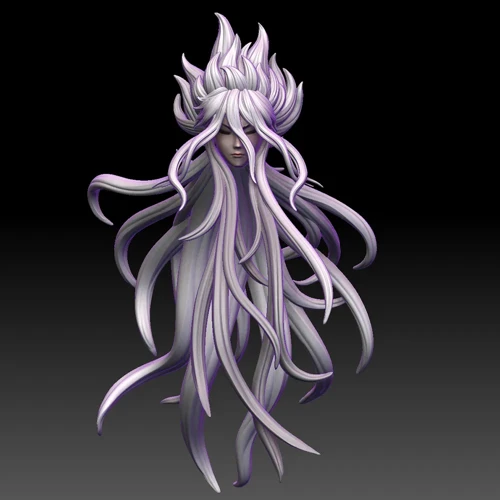
In Greek mythology, Medusa is a legendary figure with a fascinating and complex story. Medusa was once a beautiful woman with flowing hair, but after being cursed by the goddess Athena, her appearance was transformed into that of a monstrous creature with snakes for hair. One of the most well-known tales associated with Medusa is her encounter with the hero Perseus, who was tasked with slaying her. Medusa’s gaze was said to turn anyone who looked at her into stone. This mythological figure has been a popular subject in art throughout history. Artists have depicted Medusa in various ways, often capturing her reptilian features and her powerful gaze. In ancient Greek and Roman art, she was often portrayed as a fearsome and monstrous creature, evoking a sense of terror and awe. In more modern interpretations, Medusa is sometimes depicted in a more sympathetic light, highlighting the tragic aspects of her story and the transformative power of her curse. The symbolism of Medusa’s story, from her fierce appearance to the idea of petrification, has been explored and reimagined by artists across different periods and styles. Her image continues to captivate audiences and inspire artistic creations to this day.
Mythological Background
The of the Phoenix is rooted in ancient Egyptian and Greek mythology. In Egyptian mythology, the Phoenix, also known as the Bennu bird, was associated with the sun god Ra and was believed to symbolize the daily rebirth of the sun. It was often depicted as a heron-like bird with a crest of feathers on its head. The Greeks adopted the concept of the Phoenix and added their own elements to the myth. They believed that the Phoenix lived for hundreds of years before building a nest of twigs and setting itself on fire. From the ashes, a new Phoenix would emerge, representing the cycle of death and rebirth. This mythological background has influenced the artistic representations of the Phoenix, emphasizing its symbolic significance as a creature of renewal and eternal life.
Artistic Renderings and Symbolism
Artistic renderings of the Legendary Phoenix have long been imbued with rich symbolism. In various cultures, the Phoenix is seen as a symbol of resurrection, immortality, and transformation. Artists have creatively captured these themes in their depictions of the mythical creature. One common motif is the image of the Phoenix rising from its own ashes, symbolizing the cycle of life and death. Paintings often showcase the bird’s vibrant plumage, using bold and fiery colors to represent its fiery nature and association with the sun. Sculptures of the Phoenix are often depicted in dynamic poses, with outstretched wings and an air of grace and power. The imagery of the Phoenix has also been incorporated into various symbolic contexts. For example, in alchemical art, the Phoenix represents the transformation of base materials into something more refined and spiritual. Similarly, in Christian art, the Phoenix can be seen as a metaphor for Christ’s resurrection and the promise of eternal life. Such artistic renderings not only showcase the beauty and creativity of the artists, but also explore profound themes of life, death, and spiritual transformation.
Influence in Modern Art
The influence of the Phoenix in modern art is undeniable. This mythical creature continues to inspire artists, both in traditional and contemporary mediums. In modern art, the Phoenix is often depicted as a symbol of resilience, transformation, and hope. Artists draw inspiration from the Phoenix’s ability to rise from the ashes and incorporate this theme into their artworks. Painters experiment with bold colors and abstract forms to portray the fiery nature of the Phoenix, while sculptors create dynamic and intricate sculptures that capture its regal presence. The Phoenix’s symbolism of rebirth and renewal resonates with artists and viewers alike, especially during times of personal or societal transformation. Similarly, in digital art and graphic design, the Phoenix is often used as a potent symbol, representing strength, creativity, and the power to overcome challenges. Its representation in modern art reflects the continued fascination and relevance of this legendary creature in contemporary society.
Conclusion
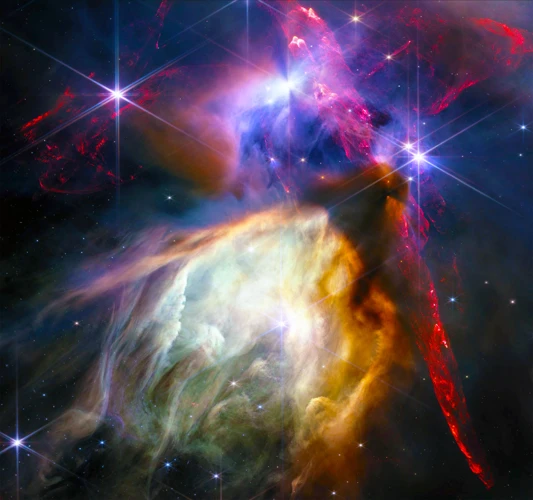
In conclusion, the mythical creatures discussed in this article, such as the Phoenix, Dragon, Unicorn, Sphinx, Leviathan, Mermaid, Centaur, and Medusa, have all played significant roles in art and culture throughout history. These creatures have been sources of inspiration for artists, who have depicted them in various forms, from ancient sculptures and paintings to modern illustrations and digital art. The artistic representations of these mythical beings not only showcase the creativity and skill of artists, but also convey deeper symbolic meanings and cultural significance. They have become part of our collective imagination and have influenced popular culture in many ways. Through their depictions in artwork, these creatures have transcended time and continue to captivate and inspire audiences today. Whether as symbols of power, wisdom, beauty, or mystery, these mythical creatures hold a timeless allure that continues to fascinate both artists and art enthusiasts alike.
Frequently Asked Questions
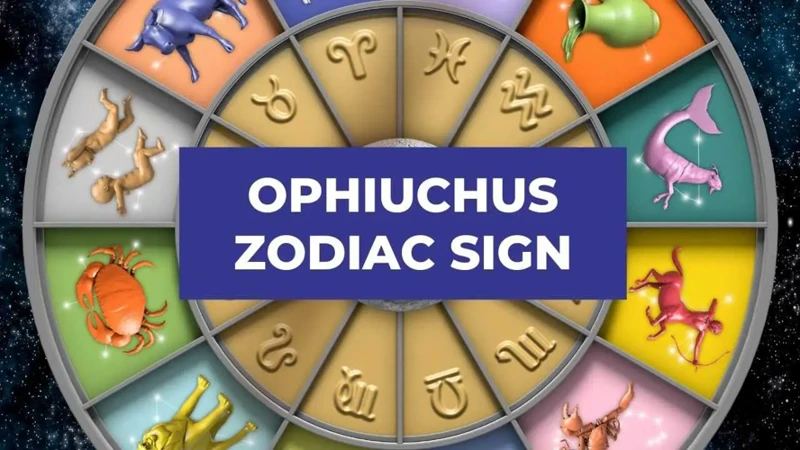
1. What is the origin of the Phoenix myth?
The myth of the Phoenix can be traced back to ancient Egyptian and Greek mythology, where it was believed to be a symbol of rebirth and immortality.
2. Why is the Phoenix often associated with fire?
The Phoenix is often associated with fire because it is said to be consumed by flames upon its death, only to be reborn again from its own ashes.
3. How has the Phoenix been portrayed in different cultures?
The Phoenix has been portrayed differently in various cultures. In Egyptian mythology, it was known as the Bennu bird and was associated with the sun god Ra. In Chinese culture, it is depicted as Fenghuang, a symbol of beauty and grace.
4. What symbolism does the Phoenix hold?
The Phoenix symbolizes resurrection, transformation, and the cycle of life. It is often seen as a symbol of hope, new beginnings, and the endurance of the human spirit.
5. How has the Phoenix influenced literature and popular culture?
The Phoenix has been a popular subject in literature, appearing in works such as J.K. Rowling’s “Harry Potter” series and Suzanne Collins’ “The Hunger Games” trilogy. It is often used as a metaphor for characters overcoming adversity and rising from the ashes.
6. Are there any famous artistic depictions of the Phoenix?
Yes, there are several famous artistic depictions of the Phoenix. One notable example is the Ashmolean Phoenix, an ancient Roman sculpture that showcases the bird in all its mythical glory.
7. What does the Phoenix represent in religious contexts?
In religious contexts, the Phoenix represents the promise of an afterlife and the concept of eternal life and resurrection. It is often associated with deities and gods who possess the power of renewal.
8. How has the Phoenix been used as a symbol in modern times?
The Phoenix has been used as a symbol of resilience and strength in modern times. It is often associated with personal growth, transformation, and the ability to overcome obstacles.
9. Can the Phoenix be seen as a metaphor for personal growth?
Yes, the Phoenix is often seen as a metaphor for personal growth and transformation. Its story of dying and being reborn can be interpreted as a representation of inner strength and the ability to rise above challenges.
10. How does the Phoenix compare to other mythical creatures in terms of popularity?
The Phoenix is widely recognized and admired for its symbolism and captivating myth. While it may not have the same level of mainstream popularity as creatures like dragons or unicorns, it holds a special place in mythology and continues to captivate the imaginations of many.
References
Frequently Asked Questions

1. What is the significance of mythical creatures in artwork?
Mythical creatures hold a powerful symbolic presence in artwork, often representing human desires, fears, and aspirations. They add a touch of fantasy and imagination to the artistic narrative, sparking curiosity and fascination among viewers.
2. Why are phoenixes often depicted rising from ashes in art?
Phoenixes are legendary birds associated with resurrection and immortality. The portrayal of phoenixes rising from ashes in art symbolizes their ability to be reborn from destruction, representing the cycle of life, death, and renewal.
3. How have dragons been depicted differently across various cultures?
Dragons have diverse depictions across cultures. Eastern dragons are often seen as benevolent creatures associated with wisdom, while Western dragons are portrayed as malevolent, fire-breathing beasts. These differences stem from cultural beliefs and folklore.
4. What is the significance of unicorns in medieval art?
Unicorns were regarded as symbols of purity and grace in medieval art. Their depictions were often associated with the Virgin Mary, representing her virtuous qualities. They also symbolized strength and purity of the soul.
5. Why are sphinxes found in ancient Egyptian artwork?
Sphinxes were highly revered in ancient Egyptian mythology. They were believed to possess the wisdom and power of the gods. Artistic representations of sphinxes in Egypt were aimed at guarding sacred spaces and imparting divine knowledge.
6. How does the myth of Leviathan influence religious artwork?
The myth of Leviathan, a sea monster from ancient Hebrew texts, represents chaos and evil. In religious artwork, Leviathan is often depicted as a symbol of the primal forces of darkness that need to be overcome by divine power and order.
7. What are the origins of the mermaid folklore?
Mermaid folklore can be traced back to ancient civilizations such as Greece and Mesopotamia. Stories of half-human, half-fish creatures emerged from sailors’ encounters with marine animals and their longing for the sea.
8. Why were centaurs significant in ancient Greek and Roman art?
Centaurs were hybrid creatures in ancient Greek and Roman mythology, representing the struggle between civilization and wild nature. Their depictions in art depicted the conflict between human reason and animalistic impulses.
9. Why is Medusa a prominent figure in art history?
Medusa, a Gorgon from Greek mythology, is often depicted with a head full of snakes. Her representation in art symbolizes the dangerous allure of female beauty and the power of femininity. Medusa’s gaze was believed to turn people to stone, reflecting the destructive power inherent in her character.
10. How do mythical creatures continue to influence modern art?
Mythical creatures still evoke a sense of wonder and fascination in modern art. Artists often draw inspiration from ancient myths and legends to explore universal themes, create visual narratives, and challenge conventional boundaries through their imaginative interpretations of these creatures.
References
- One Artist’s Mission to Illustrate All the World’s Mythical …
- 7 Mythical Beasts From Across Art History That Will Haunt …






